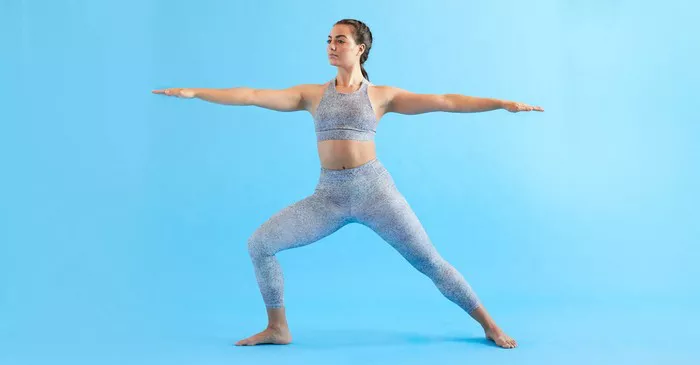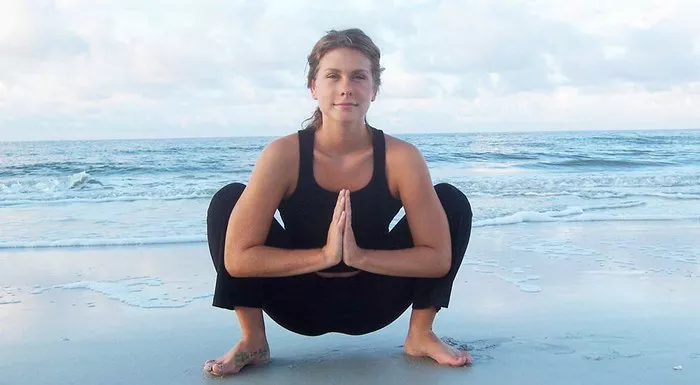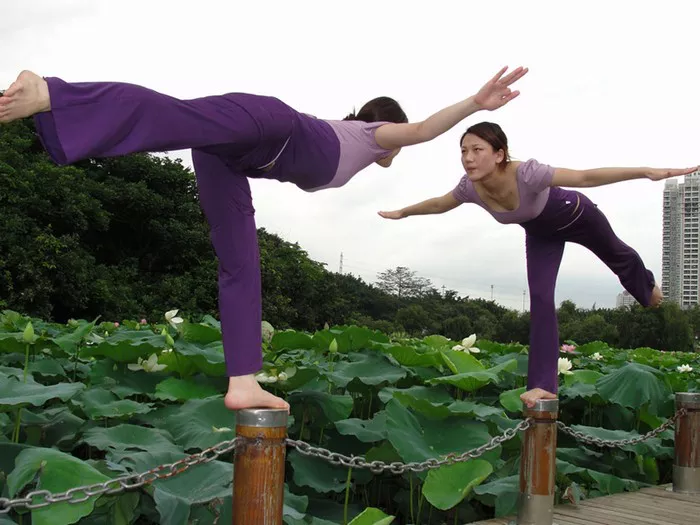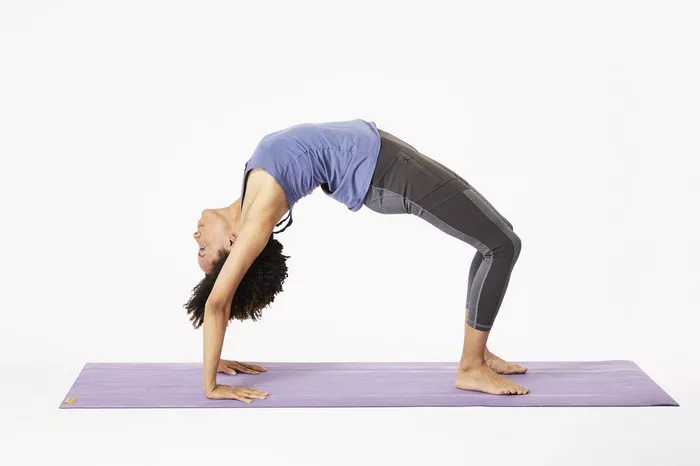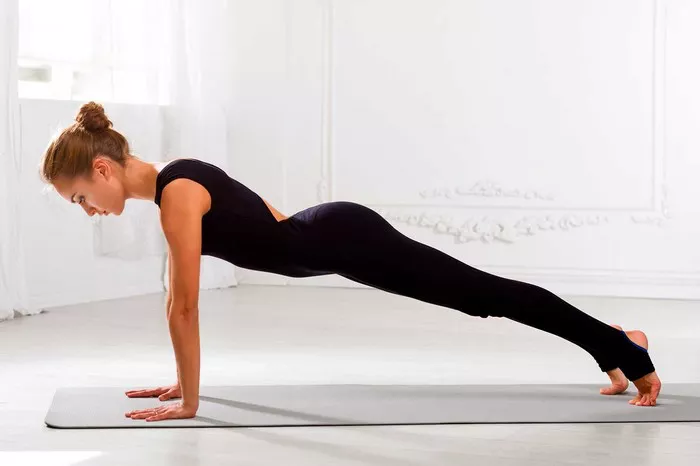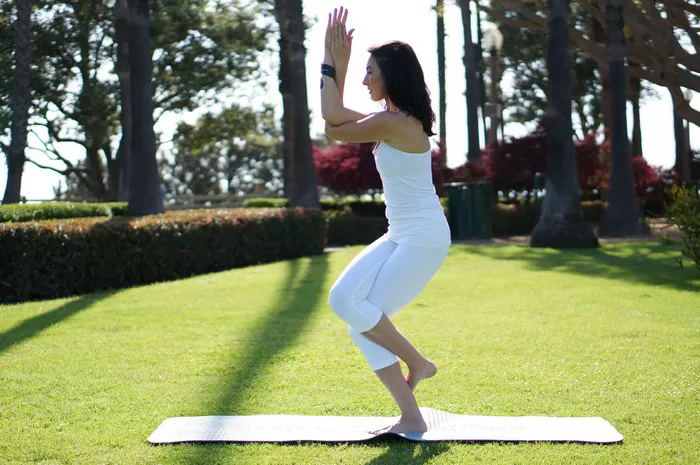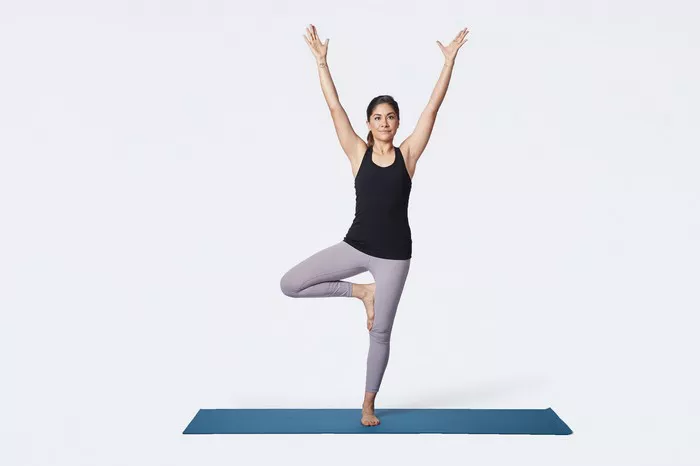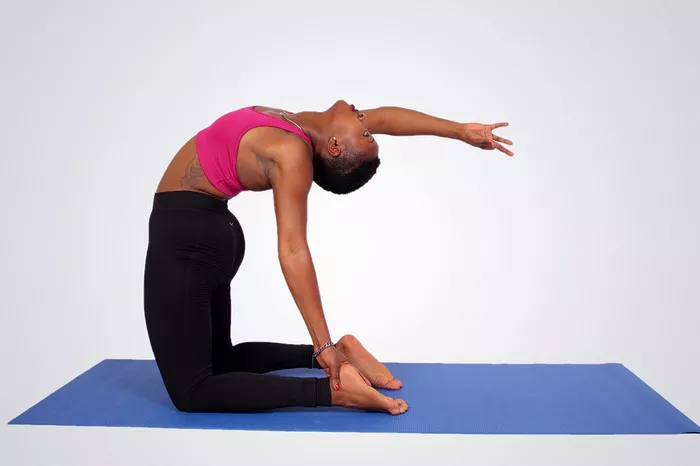Yoga, an ancient practice originating in India, offers a plethora of poses that not only promote physical well-being but also delve into deeper realms of spiritual and mental harmony. Among these poses, the Warrior 2 Pose, or Virabhadrasana II, stands as a symbol of strength, stability, and focus. In this comprehensive guide, we’ll delve into the origins and symbolism of the Warrior 2 Pose, explore its physical and mental benefits, discuss variations and modifications, provide step-by-step instructions for its execution, and highlight precautions and contraindications to ensure safe practice.
Origins and Symbolism
The Warrior 2 Pose draws its name and inspiration from Hindu mythology, specifically the tale of Virabhadra, a fierce warrior created by Lord Shiva. According to legend, Virabhadra emerged from Shiva’s wrath to avenge the death of his beloved Sati. In the pose, practitioners embody the strength, determination, and unwavering focus attributed to Virabhadra.
Symbolically, the Warrior 2 Pose represents the warrior’s readiness to confront challenges with courage and resilience. It embodies the idea of standing firm in the face of adversity, maintaining a sense of inner peace and tranquility amidst external chaos.
Physical and Mental Benefits
The practice of Warrior 2 Pose offers a myriad of physical and mental benefits:
1. Strengthens the Legs: Warrior 2 is renowned for its ability to build strength in the legs, particularly the quadriceps, hamstrings, and glutes. Holding the pose engages these muscle groups, promoting stability and endurance.
2. Opens the Hips and Chest: The extended stance of Warrior 2 facilitates hip opening, alleviating tension and improving flexibility in the hip flexors and groin. Additionally, the expansive arm position helps to open the chest and shoulders, counteracting the effects of prolonged sitting and poor posture.
3. Enhances Balance and Stability: Executing Warrior 2 requires a strong foundation and steady balance. Regular practice improves proprioception and body awareness, enhancing overall stability both on and off the mat.
4. Promotes Mental Focus and Clarity: As practitioners sink into the pose, they cultivate mental focus and concentration. The deliberate alignment and intentional breathwork foster a sense of mindfulness, allowing individuals to find calm amidst chaos.
5. Empowers Self-Confidence: Embodying the warrior archetype instills a sense of empowerment and self-assurance. By embracing the strength and courage of Virabhadra, practitioners tap into their innate potential and face challenges with renewed confidence.
Variations and Modifications
While the traditional Warrior 2 Pose is widely practiced, variations and modifications exist to accommodate practitioners of all levels and abilities:
1. High Lunge Variation: For individuals with limited mobility or balance issues, a high lunge variation offers a gentler alternative. Instead of extending the arms outward, practitioners can keep the hands on the hips or bring them together in prayer position at the heart center.
2. Reverse Warrior Variation: To deepen the stretch and incorporate a spinal twist, practitioners can transition into Reverse Warrior Pose. From Warrior 2, the front arm reaches up and back, while the back hand gently rests on the back thigh. This variation opens the side body and stimulates the flow of energy along the spine.
3. Bound Warrior Variation: Advanced practitioners seeking a deeper stretch can explore Bound Warrior Pose. In this variation, the front arm reaches behind the back, while the back arm reaches up and over to clasp the hands together. This variation enhances shoulder flexibility and stretches the chest and shoulders.
Step-by-Step Instructions
Follow these step-by-step instructions to practice Warrior 2 Pose safely and effectively:
1. Begin in Mountain Pose (Tadasana) at the top of your mat, with your feet hip-width apart and arms relaxed by your sides.
2. Step your left foot back approximately 3 to 4 feet, aligning the left heel with the right heel or slightly wider.
3. Rotate your left foot out to a 90-degree angle, ensuring that the left heel is in line with the arch of the right foot.
4. Bend your right knee, stacking it directly over the right ankle. Aim to create a 90-degree angle with your right thigh parallel to the floor.
5. Extend your arms parallel to the floor, with your palms facing down. Keep your shoulders relaxed and away from your ears.
6. Gaze over your right fingertips, maintaining a steady gaze (drishti) to enhance balance and focus.
7. Engage your core muscles and lengthen through the spine, maintaining a neutral pelvis.
8. Press firmly through the outer edge of your left foot while grounding down through the inner edge of your right foot.
9. Hold the pose for 5 to 10 breaths, focusing on steady inhales and exhales.
10. To release, straighten your right leg and return to Mountain Pose. Repeat the pose on the opposite side.
Precautions and Contraindications
While Warrior 2 Pose offers numerous benefits, it’s essential to practice with mindfulness and awareness, especially if you have any underlying health concerns or injuries. Consider the following precautions and contraindications:
1. Knee Injuries: Individuals with knee injuries or conditions such as arthritis should exercise caution when practicing Warrior 2. Avoid excessive strain on the knees by gently bending the front knee and ensuring it remains aligned with the ankle.
2. Hip or Shoulder Injuries: If you have hip or shoulder injuries, modify the pose as needed to avoid exacerbating discomfort. Focus on gentle stretching and avoid forcing the body into deep, uncomfortable positions.
3. High Blood Pressure: Practitioners with high blood pressure should avoid holding the breath or straining excessively during the pose. Maintain a steady, even breath pattern and listen to your body’s signals.
4. Pregnancy: Pregnant individuals can practice Warrior 2 with modifications to accommodate their changing bodies. Avoid deep twists and ensure proper alignment to prevent strain on the abdomen.
5. Balance Issues: If you experience balance issues or dizziness, practice near a wall or sturdy object for support. Use a narrower stance and focus on grounding through the feet to improve stability.
6. Neck Injuries: Individuals with neck injuries should avoid straining the neck by keeping the gaze soft and the head in line with the spine. Modify the pose as needed to maintain comfort and stability.
Conclusion
In conclusion, the Warrior 2 Pose in yoga transcends its physical form to embody a profound metaphor for resilience, courage, and inner strength. Through regular practice, practitioners can harness the transformative power of this pose to cultivate physical vitality, mental clarity, and emotional balance. By honoring the warrior spirit within, individuals can navigate life’s challenges with grace, poise, and unwavering determination.

